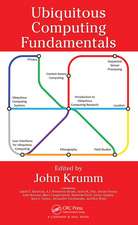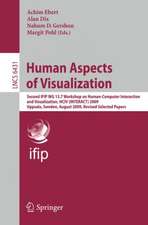The Muse Method for Usability Engineering
Autor Kee Yong Lim, John B. Longen Limba Engleză Paperback – iul 2009
| Toate formatele și edițiile | Preț | Express |
|---|---|---|
| Paperback (1) | 411.65 lei 6-8 săpt. | |
| Cambridge University Press – iul 2009 | 411.65 lei 6-8 săpt. | |
| Hardback (1) | 888.66 lei 6-8 săpt. | |
| Cambridge University Press – 23 noi 1994 | 888.66 lei 6-8 săpt. |
Preț: 411.65 lei
Preț vechi: 514.56 lei
-20% Nou
Puncte Express: 617
Preț estimativ în valută:
78.78€ • 81.27$ • 66.67£
78.78€ • 81.27$ • 66.67£
Carte tipărită la comandă
Livrare economică 05-19 martie
Preluare comenzi: 021 569.72.76
Specificații
ISBN-13: 9780521479998
ISBN-10: 0521479991
Pagini: 352
Ilustrații: 10 b/w illus. 25 tables
Dimensiuni: 170 x 244 x 19 mm
Greutate: 0.56 kg
Editura: Cambridge University Press
Colecția Cambridge University Press
Locul publicării:Cambridge, United Kingdom
ISBN-10: 0521479991
Pagini: 352
Ilustrații: 10 b/w illus. 25 tables
Dimensiuni: 170 x 244 x 19 mm
Greutate: 0.56 kg
Editura: Cambridge University Press
Colecția Cambridge University Press
Locul publicării:Cambridge, United Kingdom
Cuprins
Preface; Part I. The Need for a Structured Human Factors Method to Support System Development: 1. On human factors contributions to the development of interactive systems; Part II. Development and Overview of MUSE - A Structured Human Factors Method: 2. The development of MUSE; 3. An overview of MUSE; Part III. Detailed Account of MUSE - A Structured Human Factors Method: 4. The elicitation and analysis phase of MUSE; 5. The synthesis phase of MUSE; 6. The design specification phase of MUSE; Part IV. The Integration of Human Factors with Structured Software Engineering Methods: 7. Prerequisites and examples of the integration of human factors with structured software engineering methods; Part V. Synopsis: 8. Assessment and future development of MUSE and MUSE*/JSD; References; Glossary; Annexes; Bibliography; Index.
Recenzii
"This extrapolation of a structured human factors method may mark a watershed in usability engineering approaches to design." John F. Meech and Raymond Devlin, Ergonomics
Descriere
A manual and description of the MUSE method. Essential reading for all systems developers from either HCI or software engineering communities.


















